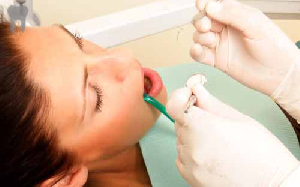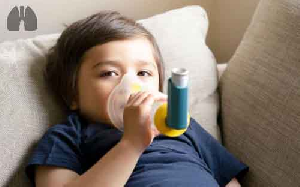
Victoria Alcaraz-Serrano, Elena Gimeno-Santos, Giulia Scioscia, Albert Gabarrús, Adria Navarro, Beatriz Herrero-Cortina, Rosanel Amaro, Laia Fernández-Barat, Antoni Torres
European Respiratory Journal 2020 55: 1902138; DOI: 10.1183/13993003.02138-2019
Abstract
Background Patients with bronchiectasis have a less active lifestyle than healthy peers, but the association with hospital admission has not been explored. The aim of this study was to investigate the association between 1) any physical activity variable; and 2) sedentary time, with hospitalisation due to exacerbation in adults with bronchiectasis.
Methods In this prospective observational study, baseline lung function, quality of life, exercise tolerance, severity of bronchiectasis and physical activity were recorded. Physical activity was objectively assessed over a week using a SenseWear armband and the results were expressed in steps·day–1 and sedentary time. Number of hospitalisations due to a bronchiectasis exacerbation and time to first event were recorded after 1-year follow-up.
Results Sixty-four patients with bronchiectasis were analysed, of whom 15 (23%) were hospitalised during the follow-up. Hospitalised patients showed poor baseline clinical and severity outcomes, fewer steps walked per day and more sedentary behaviour than the non-hospitalised group. Patients who walked ≤6290 steps·day–1 or spent ≥7.8 h·day–1 in sedentary behaviour had an increased risk of hospital admission due to bronchiectasis exacerbation at 1-year follow-up. Specifically, ≥7.8 h·day–1 of sedentary behaviour was associated with a 5.9-fold higher risk of hospital admission in the following year.
Conclusions Low levels of physical activity and high sedentary time at baseline were associated with a higher risk of hospitalisation due to bronchiectasis exacerbation. If these findings are validated in future studies, it might be appropriate to include physical activity and sedentary behaviour as an item in severity scores.
Adult patients with bronchiectasis and reduced physical activity (<6290 steps·day–1) or high sedentary behaviour (≥7.8 h·day–1) have a higher than average risk of hospital admission due to exacerbation after 1-year follow-up http://bit.ly/2wX2Y2D
Footnotes
-
This article has supplementary material available from erj.ersjournals.com
-
Author contributions: V. Alcaraz-Serrano had full access to all of the data in the study and takes responsibility for the integrity of the data and the accuracy of the data analysis. V. Alcaraz-Serrano designed and developed the study protocol. V. Alcaraz-Serrano and A. Navarro collected the data from patients. V. Alcaraz-Serrano, E. Gimeno-Santos and A. Gabarrus participated in the statistical analysis and data interpretation. V. Alcaraz-Serrano, E. Gimeno-Santos and G. Scioscia participated in the writing of the manuscript. All the authors have read the final version of the manuscript, fully approve it and qualify for authorship.
-
Conflict of interest: E. Gimeno-Santos has nothing to disclose.
-
Conflict of interest: G. Scioscia has nothing to disclose.
-
Conflict of interest: A. Gabarrus has nothing to disclose.
-
Conflict of interest: A. Navarro has nothing to disclose.
-
Conflict of interest: B. Herrero-Cortina has nothing to disclose.
-
Conflict of interest: R. Amaro has nothing to disclose.
-
Conflict of interest: L. Fernandez-Barat has nothing to disclose.
-
Conflict of interest: A. Torres has nothing to disclose.
-
Conflict of interest: V. Alcaraz-Serrano has nothing to disclose.
-
Support statement: This work was supported by the Sociedad Española de Neumología y Cirugía Torácica (SEPAR 052/2014) and the Col·legi Fisioterapeutes Catalunya (047913/2016). E. Gimeno-Santos received personal funding from the Instituto de Salud Carlos III via a Sara Borrell contract (Acción Estratégica en Salud 2016). Funding information for this article has been deposited with the Crossref Funder Registry.
- Received November 4, 2019.
- Accepted March 3, 2020.
- Copyright ©ERS 2020














